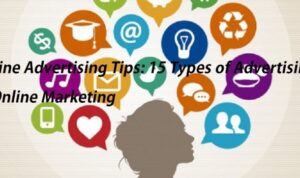Creating an Automated Email Sequence opens the door to efficient customer interaction, paving the way for enhanced engagement and lead nurturing. Dive into this journey of automation and personalized communication.
Automated email sequences are a game-changer for businesses looking to streamline their communication processes. From planning to execution, this method revolutionizes the way companies connect with their audience.
Introduction to Automated Email Sequences

Yo, listen up! So, automated email sequences are like your secret weapon in the marketing game. It’s all about setting up a series of emails that get sent out automatically to your peeps based on certain triggers or schedules.
Now, why should you care about this cool tech? Well, lemme break it down for ya. Automated email sequences can save you loads of time and effort while still keeping your customers engaged. Plus, they help you stay connected with your leads and customers without having to manually send out emails every single time.
Benefits of Automated Email Sequences
- Keeps your brand top of mind with your audience
- Helps in nurturing leads through the sales funnel
- Increases customer engagement and loyalty
- Allows for personalized communication with your peeps
Planning Your Automated Email Sequence
When setting up an automated email sequence, it’s crucial to have a clear plan in place to achieve your goals effectively. This involves identifying your objectives, designing a flowchart, and determining your target audience for each email in the sequence.
Identify Your Goals
To kick things off, start by clearly defining the goals you want to accomplish with your automated email sequence. Whether it’s increasing sales, nurturing leads, or promoting a new product, having a specific goal in mind will guide your email content and strategy.
- Boost sales by sending targeted promotional emails.
- Nurture leads with informative and engaging content.
- Promote new products or services to existing customers.
Design a Flowchart
Create a visual representation of your automated email sequence by designing a flowchart. This will help you map out the different emails in the sequence, their timing, and the actions triggered by recipient responses. A flowchart provides a clear overview of the entire sequence and ensures a logical progression of emails.
Flowchart Example:
[Insert description of a sample flowchart outlining the sequence of automated emails]
Determine Target Audience
For each email in your sequence, consider the specific target audience you’re addressing. Tailoring your content to different segments of your audience will increase engagement and relevance. Whether it’s new subscribers, loyal customers, or inactive leads, understanding your audience’s needs and preferences is key to crafting effective emails.
- Create personalized welcome emails for new subscribers.
- Offer exclusive deals to loyal customers to encourage repeat purchases.
- Re-engage inactive leads with targeted content to reignite their interest.
Creating Engaging Content for Emails
When it comes to creating engaging content for your automated email sequences, you want to grab your audience’s attention right from the subject line. Compelling subject lines can significantly increase your email open rates, so it’s essential to make them catchy and intriguing.
Writing Compelling Subject Lines
- Keep it short and sweet: Aim for subject lines that are concise and to the point.
- Use personalized language: Include the recipient’s name or other personalized details to make the email feel more tailored to them.
- Create a sense of urgency: Incorporate words that convey urgency or exclusivity to encourage immediate action.
- Avoid clickbait: While you want to be attention-grabbing, make sure your subject line accurately reflects the content of the email to build trust with your audience.
Creating Valuable Content
- Understand your audience: Tailor your content to address the needs, interests, and pain points of your target audience.
- Provide useful information: Offer insights, tips, or resources that add value and benefit your subscribers.
- Include visuals: Incorporate images or videos to make your emails more visually appealing and engaging.
- Share success stories: Highlight customer testimonials or case studies to demonstrate the benefits of your products or services.
Importance of Personalization, Creating an Automated Email Sequence
- Builds rapport: Personalizing your emails makes your audience feel valued and understood, strengthening your relationship with them.
- Increases engagement: Tailored content is more likely to resonate with recipients, leading to higher open rates and click-through rates.
- Boosts conversions: By delivering personalized content based on user behavior or preferences, you can drive conversions and sales more effectively.
- Enhances brand loyalty: When subscribers receive relevant and personalized emails, they are more likely to remain loyal to your brand over time.
Setting Up Automation Tools: Creating An Automated Email Sequence

Setting up automation tools is crucial for streamlining your email marketing efforts. By utilizing the right platform and integrating it with your CRM system, you can effectively reach your target audience and analyze the performance of your automated email sequences.
Comparing Email Marketing Automation Platforms
When choosing an email marketing automation platform, consider factors such as ease of use, pricing, scalability, and integration capabilities. Popular options include Mailchimp, ActiveCampaign, HubSpot, and Marketo. Each platform offers unique features and benefits, so take the time to research and select the best fit for your business needs.
Integrating Your CRM with Automation Tool
Integrating your CRM system with your chosen automation tool is essential for syncing customer data and ensuring personalized communication. Most automation platforms offer easy integration options with popular CRM systems like Salesforce, Microsoft Dynamics, and Zoho CRM. By connecting the two systems, you can create targeted email campaigns based on customer behavior and preferences.
Monitoring and Analyzing Performance
After setting up your automated email sequences, it’s important to monitor and analyze their performance regularly. Track key metrics such as open rates, click-through rates, conversion rates, and unsubscribe rates to gauge the effectiveness of your campaigns. Use A/B testing to optimize your emails and make data-driven decisions to improve engagement and ROI.





